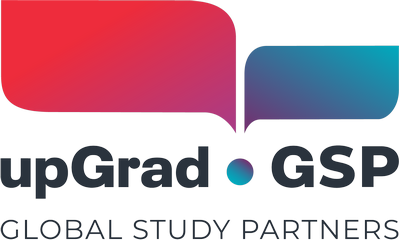New research underscores the pressing need for US universities to enhance their career services, particularly in light of the increasing number of international graduates seeking employment in the country. The study, conducted by market specialists Intead and international graduate job search platform F1 Hire, presents fundamental insights into the employment landscape for international students and offers recommendations for both educational institutions and students.
Need for investment in career services
The research, “Connecting Dots: How International Students Are Finding US Jobs,” highlights a significant gap in the support provided to international students in their job search efforts. Ben Waxman, CEO of Intead, emphasised the importance of universities investing in the outcomes of their education programs. “We know that students, international students in particular, want jobs. That’s why they’re making this investment. They want to go out and experience the world, but they’re practical. They want jobs; and the institutions that we evaluate all the time, by and large, are not investing in the outcome part,” Waxman explained to The PIE News.
Findings on H-1B and PERM sponsorship
One of the most surprising findings of the research is the geographical distribution of H-1B visa sponsorships. While California remains the state with the highest number of applicants at 570,499 and 47,494 sponsors, resulting in an applicant-to-sponsor ratio of 12%, North Carolina shows the highest application-ratio sponsor at 18.5%, followed closely by Texas at 17.9%. Michigan were also in the realm of 15%.
The research also found that certain states outside of California, New York, and Texas are notable for the highest ratio of H-1B jobs per international student attending universities there. These states include New Mexico, Nevada, Colorado, Tennessee and Montana. These data suggest that opportunities for international graduates may be more advantageous in lesser-known states than traditionally thought.
Furthermore, the study revealed that technology companies dominate the landscape for Permanent Labor Certification Program (PERM), with 90% top sponsors being tech firms. The PERM visa sponsorship allows US employers to sponsor a foreign worker for permanent residence in the country. Despite this dominance, only 1.6% of more than 1.5 million job postings analysed included sponsorship-friendly language, depicting a significant barrier for international job seekers.
The role of STEM degrees and international salaries
International students continue to be interested in STEM degrees, primarily because the Optional Practical Training (OPT) extension provides up to three years of work authorisation. The data indicates that international graduates with STEM degrees frequently use platforms like F1 Hire to secure tech-related positions. “When employers are looking for talent, a large percentage of the pool of people who have the talent they need is international,” Waxman added.
Moreover, the research found that: “International students earning a degree outside of the US can make a higher starting salary in the US than those graduating with a US degree and seeking a US job.” For instance, Indian graduates with non-US degrees have a median salary of $119,870, compared to $111,197 for those educated in the US.
The median salary data provided in the report is as follows:

As shown by the research, the true value of a US degree for international students is that US employers tend to look for fewer years of prior work experience, lowering the entry bar for students with limited work experience.
Recommendations for institutions and students
Intead’s report provides actionable recommendations for both educational institutions and international students. For institutions, the emphasis is on building strong career services and fostering strong relationships with corporate employers, particularly those willing to sponsor H-1B and PERM visas. Universities are encouraged to partner with employment platforms to better identify and connect with international talent-friendly employers.
“Universities investing in robust career service offices and developing strong relationships with corporate partners will win,” the report states. It also suggests that institutions should focus on partnering with H-1B- and PERM-friendly employers in states like California, New York and Texas, as well as local employers with a propensity to sponsor H-1B applications.
For international students, the recommendation includes considering institutions in states with favourable H-1B and PERM sponsorship ratios and investigating the strength of these institutions’ relationships with employers. The report also suggests leveraging online tools to find suitable job opportunities.
Importance of data and marketing
A key takeaway from the research is the need for better data on graduate outcomes. Institutions must gather and utilise data to demonstrate the success of their graduates. This includes showcasing the testimonials and career paths of recent alumni through social media and other marketing channels. By providing prospective students with concrete evidence of career outcomes, universities can enhance their appeal and support the professional aspirations of international students.
Intead notes a challenge faced by US institutions (but the point could be applied to institutions in many destinations): “Institutions seem to have the hardest time making the case [that their degrees boost career prospects] to their prospective students—or some of the schools simply don’t have the student data on the whole job search process.”
They advise making a long-term investment in career services, suggesting to establish strong and well-known co-op programs that produce both career experience and careers.
Prioritising investment in career services
The report by Intead and F1 Hire illuminates the essential role of career services in supporting international students. As the demand for skilled international graduates continues to grow, US institutions are urged to prioritise investment in career services and employer partnerships to remain competitive and attractive to global talent. This can better fulfil the career aspirations of their international students and strengthen their position in the international education market.
To know more about the opportunities available for international students and updates about education in the USA, check out our blog or reach out to our North American team at gspna@globalstudypartners.com.



